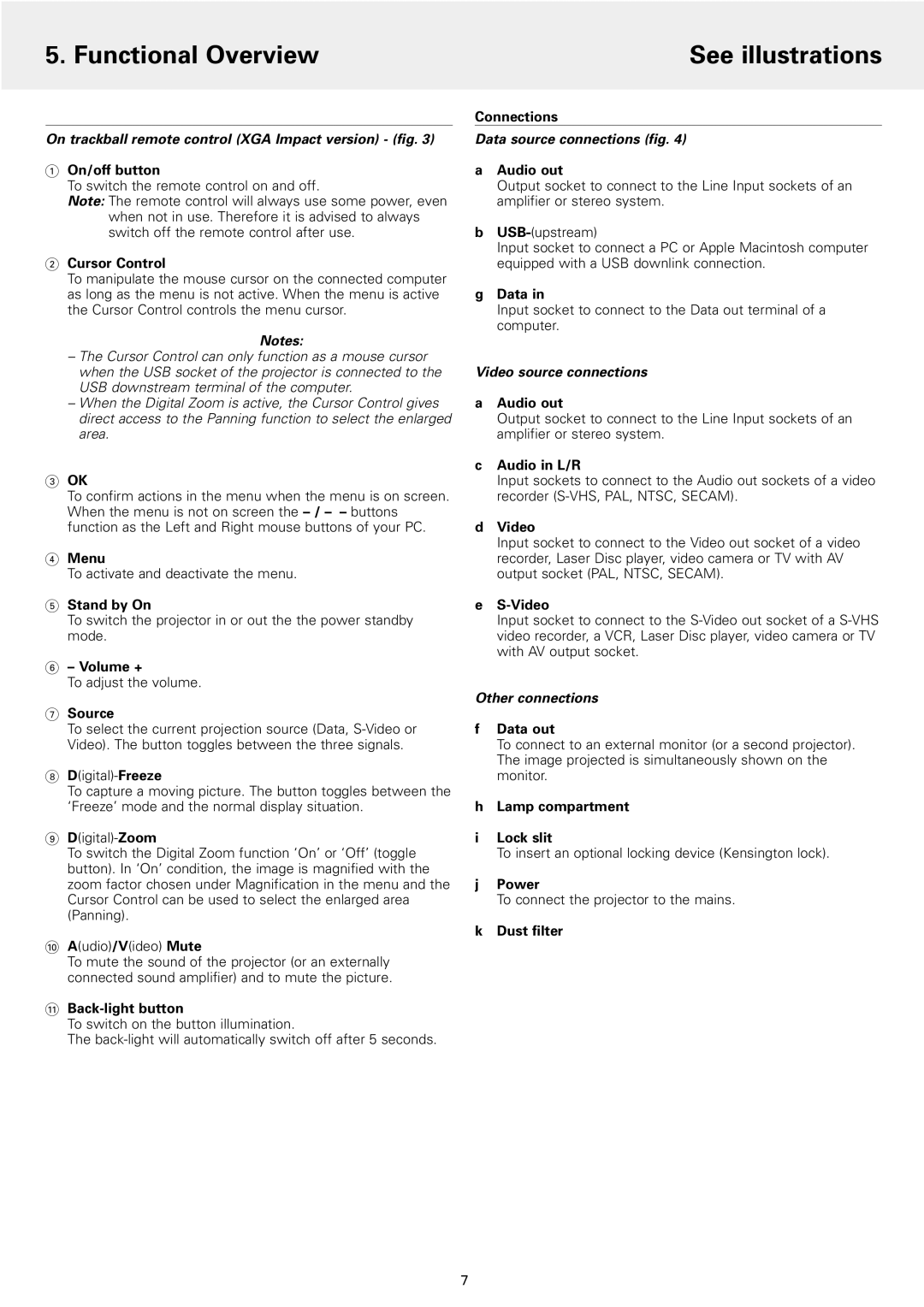
5. Functional Overview | See illustrations |
|
|
On trackball remote control (XGA Impact version) - (fig. 3)
1On/off button
To switch the remote control on and off.
Note: The remote control will always use some power, even when not in use. Therefore it is advised to always switch off the remote control after use.
2Cursor Control
To manipulate the mouse cursor on the connected computer as long as the menu is not active. When the menu is active the Cursor Control controls the menu cursor.
Notes:
–The Cursor Control can only function as a mouse cursor when the USB socket of the projector is connected to the USB downstream terminal of the computer.
–When the Digital Zoom is active, the Cursor Control gives direct access to the Panning function to select the enlarged area.
3OK
To confirm actions in the menu when the menu is on screen. When the menu is not on screen the
4Menu
To activate and deactivate the menu.
5Stand by On
To switch the projector in or out the the power standby mode.
6– Volume +
To adjust the volume.
7Source
To select the current projection source (Data,
8
To capture a moving picture. The button toggles between the ‘Freeze’ mode and the normal display situation.
9
To switch the Digital Zoom function ‘On’ or ‘Off’ (toggle button). In ‘On’ condition, the image is magnified with the zoom factor chosen under Magnification in the menu and the Cursor Control can be used to select the enlarged area (Panning).
0A(udio)/V(ideo) Mute
To mute the sound of the projector (or an externally connected sound amplifier) and to mute the picture.
!Back-light button
To switch on the button illumination.
The
Connections
Data source connections (fig. 4)
aAudio out
Output socket to connect to the Line Input sockets of an amplifier or stereo system.
bUSB (upstream)
Input socket to connect a PC or Apple Macintosh computer equipped with a USB downlink connection.
gData in
Input socket to connect to the Data out terminal of a computer.
Video source connections
aAudio out
Output socket to connect to the Line Input sockets of an amplifier or stereo system.
cAudio in L/R
Input sockets to connect to the Audio out sockets of a video recorder
dVideo
Input socket to connect to the Video out socket of a video recorder, Laser Disc player, video camera or TV with AV output socket (PAL, NTSC, SECAM).
e
Input socket to connect to the
Other connections
fData out
To connect to an external monitor (or a second projector). The image projected is simultaneously shown on the monitor.
hLamp compartment
iLock slit
To insert an optional locking device (Kensington lock).
jPower
To connect the projector to the mains.
kDust filter
7
